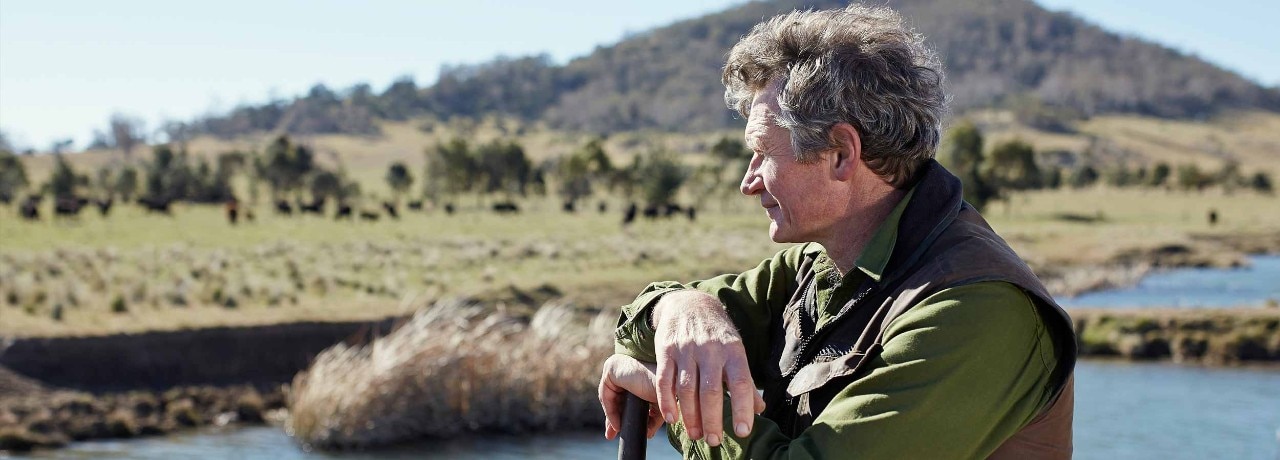Taking action on climate change | Environment - NAB
Why climate action is important for us all
The success of our whole economy depends on the health of our climate.
Climate change presents significant risks and opportunities to the economy. Research previously commissioned by NAB has detailed the economic opportunity for Australia by looking at the difference between an Australia that only meets its 2050 net-zero targets, versus an Australia that competitively trades in global decarbonisation. The research report, ‘All systems go: Powering ahead’ the second report in the ‘All Systems Go’ series by Deloitte Access Economics, finds by using Australia’s natural advantages in solar, wind and critical minerals could add up to $435 billion to the national economy by 2050.
Our climate strategy
Our strategy aims to support our customers as we move together to a resilient net zero economy. We aim to achieve net zero by 2050 across our financed and facilitated emissions, and operations.
Our climate strategy, which was refreshed in 2025, leverages our strength as a relationship-led bank, with the aim to support customers to reduce their emissions and finance associated opportunities. Our climate initiatives span our Business and Private Banking, Personal Banking, Corporate and Institutional Banking divisions and BNZ.
NAB’s climate strategy also captures our operational emissions targets, which includes our international offices, in addition to the capability of our colleagues to support our customers through the transition. For more details about our climate change strategy and governance, refer to our 2025 Climate Report (PDF, 12MB).
Action we're taking
Our main role in climate action is the financing we provide. Our actions are informed by science. We’re investing in positive change and helping customers do so too.
While we continue to focus on reducing our own greenhouse gas (GHG) emissions footprint, our greatest impact is through the finance we provide to customers.
We’re taking action to help our economy transition to one powered more by renewables, less by fossil fuels.
That's why we're continuing to provide finance to our energy generation customers and other high emitters as they transition to lower carbon operations and engaging with them on their transition plans.
Reducing our emissions
Since 2010, we have been playing our part by reducing our own operational footprint through emissions avoidance and reduction, and then offsetting residual emissions. NAB’s Australian operations have been certified by Climate Active’s Standard for Organisations since 1 July 2010. BNZ is Toitū net carbon zero organisation certified.
We’re continuing to cut emissions in our operations.
Progressing to net zero
Our ambition is to support our customers as we move together to a resilient net zero economy.
Cumulatively since 2010, NAB is Australia’s leading bank for project finance to the global renewable energy sector. In 2025, 80% of our total power generation finance was for renewables.
Helping customers act too
Our customers are working towards lower emissions, and we’re engaging with them as they evolve their businesses. This includes:
- Helping colleagues better support customers to decarbonise and build climate resilience through targeted climate training.
- Helping customers become more resilient to natural disasters.
We’re providing finance to help customers reduce emissions, with tailored products and services that support customers to take climate action.
For further information on our approach to Customer Transition Plans, refer to our 2025 Climate Report (PDF, 12MB), pages 19 and 20.
Working together
To help get Australia to net zero we’re participating in the:
- UN Principles for Responsible Banking
- UN Environment Programme Finance Initiative
- RE100 Initiative
-
As the world changes, so does our understanding of climate risk.
Read more about NAB’s ESG risk management. Further detail is also available in our 2025 Climate Report (PDF, 12MB).
-
From 1 October 2025, a Customer Transition Plan is required for customers in certain sectors and for certain types of finance.
In 2024, we developed a Customer Transition Plan Assessment Framework to support the review of Customer Transition Plans and engagement with customers on their actions and progress. Application of the Assessment Framework is in addition to existing ESG risk assessment processes which include consideration of climate-related risks, as well as decisions NAB may make on a case-by-case basis to support progress in achieving NAB's decarbonisation targets.
Read more about NAB’s ESG risk management. Further detail is also available in our 2025 Climate Report (PDF, 12MB).
-
We continue to build on our climate risk capabilities and processes.
We regularly review our environment, social and governance (ESG)-related credit policy and appetite settings, including those related to our exposure to emissions-intensive, climate sensitive and low-emissions sectors. These reviews consider a range of factors including:
- Various climate change scenarios for both transition and physical risk.
- Customer strategies and plans and their alignment to the Paris Agreement temperature goals.
- Industry trends.
- Trends in our exposures to these sectors.
This review process has led to implementation of ESG-related credit policy and risk settings, including for coal, oil and gas. These risk settings are complementary to our interim sectoral decarbonisation targets, which have been set to guide our lending across key sectors in our portfolio to align our lending portfolio to net zero emissions by 2050, as well our Customer Transition Plan Assessment Framework.
Further details about interim risk policy settings is provided in the 'Metrics and targets' section of the 2025 Climate Report (PDF, 12MB).
-
In 2023, we launched the NAB Climate Learning Series, a partnership with Melbourne Business School’s Centre for Sustainability and Business that aims to equip bankers with climate knowledge and confidence to support our customers to decarbonise and transition. The series comprised of four climate learning programs providing colleagues with subject matter expertise and insights.
Since the launch of the Climate Learning Series, over 8,100 colleagues across NAB have completed the first program Climate Foundations. A further three additional sector-specific programs were launched to focus on the Transport, Agriculture, and Real Estate (commercial and residential) sectors, which contribute significantly to national carbon emissions and represent significant customer exposure. Across the three additional sector-specific programs, there have been over 13,100 completions by colleagues to date.
In 2024, a refreshed climate risk module was rolled out as part of NAB's annual risk awareness training for colleagues. This included a case study to help colleagues better understand and recognise climate risk (both transition and physical risk) in a customer context. The module was mandatory for certain risk and customer-facing colleagues and other colleagues were able to choose to complete the training.
-
In 2025, we achieved our target to source 100% of NAB Group’s operational electricity consumption from renewable sources, as part of the RE100 initiative.
We’ve also set a science-based target to reduce our scope 1 and 2 (market-based method) greenhouse gas emissions, aligned with a pathway to limit global warming to 1.5°C. We report on our progress in our annual reporting suite. Learn more about our environmental performance.
-
In 2024, we established our new environmental finance ambition of $80 billion by 2030. As of 30 September 2025, cumulative environmental finance reached $17.7 billion towards our ambition, including $11.9 billion of lending activity and $5.7 billion of capital markets activity.
Learn more about our environmental financing ambition on page 42 of our 2025 Climate Report (PDF, 12MB).
-
We continue to engage in dialogue with key stakeholders, including customers and the wider community, to help inform how we advocate on climate policy with all levels of government. We also strive to ensure our engagement on climate policy continues to be co-ordinated and consistent. We communicate our position, and outcomes annually through our annual reporting suite.
-
We first established an internal carbon price in 2010, as part of action to understand the cost of carbon and to inform our investment decision making. NAB will continue to disclose our internal carbon price through our annual Climate Report (PDF, 12MB).
Read more climate news
Learn how we’re working to be part of the climate solution on NAB News.
Explore sustainability at NAB
Environmental approach
Learn about how we’re taking a strategic and sustainable approach to managing our business.
Environmental performance
See how we’re tracking on our key environmental targets.
Natural capital and managing our environmental impact
Learn how we work to reduce our direct environmental impact and protect natural resources when making business decisions.
Contact us
Use our Customer Support Tool
Solve problems quickly online with our easy-to-follow guides. Simply select a topic and we’ll direct you to the information you need.
Message us online
NAB Messaging is available to answer your questions in a secure environment.
- Log into NAB Internet Banking or the NAB app.
- Select the NAB Messaging icon.
- Select Start Conversation.
Stay in touch on social media
Connect with our social profiles online.
Important Information
Apologies but the Important Information section you are trying to view is not displaying properly at the moment. Please refresh the page or try again later.





